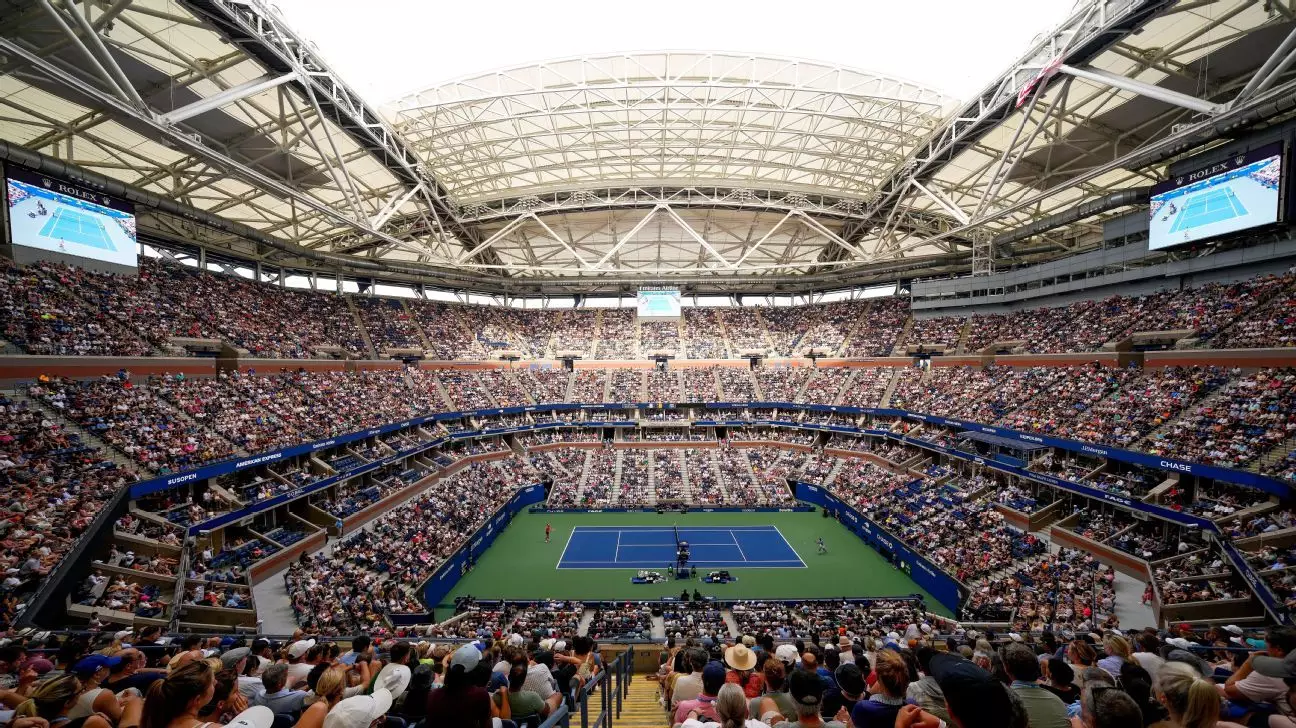Transformational Opportunity: The Revamp of Arthur Ashe Stadium
Have you ever walked into a place and immediately felt the buzzing excitement in the air? That’s exactly what Arthur Ashe Stadium promises with its monumental revamp. It’s not just about changing a physical space; it’s about elevating the entire US Open experience for players, fans, and everyone in between. The U.S. Tennis Association (USTA) is pulling out all the stops with an ambitious $800 million renovation project. What’s even more impressive is their commitment to finance this transformation independently, without dipping into city funds. This bold move highlights their dedication to enhancing the tennis landscape while navigating the complex world of sports finance.
For those who cherish the thrill of live tennis, this renovation breathes new life into a historic venue. I’ve been a fan of tennis for as long as I can remember, and there’s something uniquely magical about Arthur Ashe Stadium. It’s where legends are made, dreams come alive, and the roar of the crowd becomes a part of the game itself. Witnessing this transformation is like watching a beloved friend embark on a promising new adventure. And just like any good story, there’s a blend of excitement and anticipation for what’s yet to come.
Key Takeaways
- The USTA is investing $800 million in Arthur Ashe Stadium’s modernization.
- The project aims to enhance both player amenities and fan experiences.
- This renovation showcases a financial commitment independent of city funds.
The Players Voice Amidst Ambition
While the spotlight shines brightly on these impressive renovations, it’s impossible to ignore the underlying tension that persists. Financial disparity between tournament revenues and player compensation raises eyebrows and questions alike. Earlier this year, tennis superstar Novak Djokovic co-founded a players’ group that filed a class-action antitrust lawsuit. With major tournaments raking in over $1.5 billion in 2024, many players feel shortchanged with payouts between 10% to 20%. This discrepancy brings to light crucial discussions about economic sustainability within the sport and whether infrastructure investments are overshadowing player equity.

Enhancements Designed for the Future
One remarkable aspect of this renovation is its careful planning so as not to disrupt upcoming US Open events. Kicking off on August 24, this year’s tournament will be historic with a Sunday opening—an exciting deviation since the Open era began in 1968. The improvements slated for debut by the 2027 US Open are comprehensive and considerate. A dedicated $250 million player performance center will enhance training conditions with additional courts, upgraded locker rooms, and comfortable lounges for athletes to strategize and relax.
The seating arrangement within Arthur Ashe Stadium is set for a notable transformation too. Courtside seating capacity will increase from 3,000 to 5,000 spaces, offering more fans an immersive experience without altering overall audience capacity significantly. This attention to detail shows an appreciation for fan experience that often gets overlooked in large-scale renovations.
Luxury and Accessibility Unite
Spectators can look forward to architectural enhancements that promise to redefine luxury and accessibility at Arthur Ashe Stadium. A new grand entrance will welcome visitors into an animated atmosphere complete with two luxurious suite levels, updated dining options, and larger concourses designed for comfort and ease of movement. Notably, there will be more escalators and elevators, reflecting a commitment to making modern conveniences accessible to all attendees.
In today’s world where sports intersect commerce and culture, this $800 million investment by the USTA symbolizes more than just physical changes; it’s about envisioning a bright future for tennis. Such transformative efforts might inspire other organizations to balance grand objectives with player welfare, prompting vital discussions around fair compensation and profitability across the industry. As we count down to witnessing this renewed venue in action, fans and players alike will keenly observe if these ambitious plans lead to genuine advancements throughout the sport’s landscape.

Final Thoughts
As we eagerly await these exciting changes at Arthur Ashe Stadium, it’s clear that this renovation holds transformative potential not only for tennis but also for sports as a whole. With each step forward comes an opportunity to address longstanding issues like fair compensation for players while simultaneously enhancing fan experiences. Whether you’re a devoted tennis enthusiast or someone who enjoys catching an occasional match on TV, there’s no denying the significance of what lies ahead for this iconic venue.
It’s thrilling to imagine how these upgrades—crafted with precision—will influence future generations of players and spectators alike. We find ourselves at a crossroads where tradition meets innovation; let’s embrace it wholeheartedly as we cheer on our favorite athletes under brighter lights in an even grander arena!
Arthur Ashe Stadium
US Open
Tennis Renovation
Sports Finance


Leave a Reply